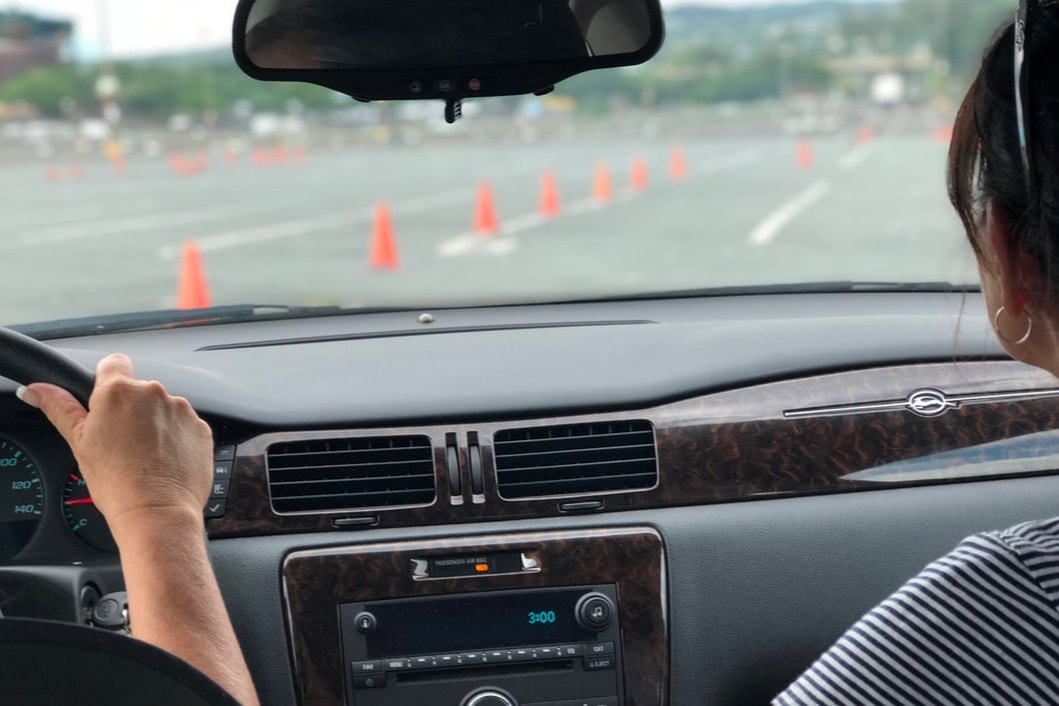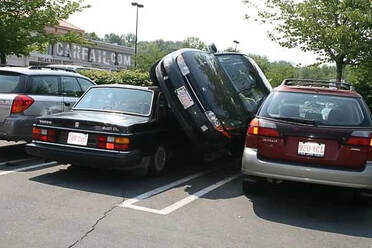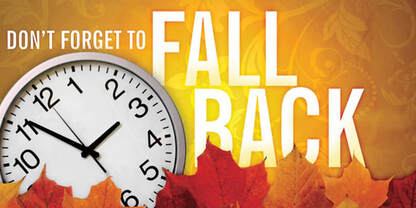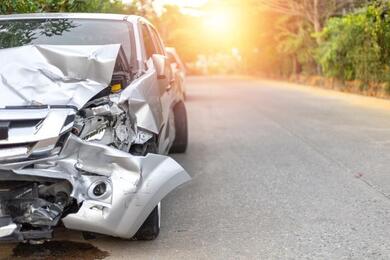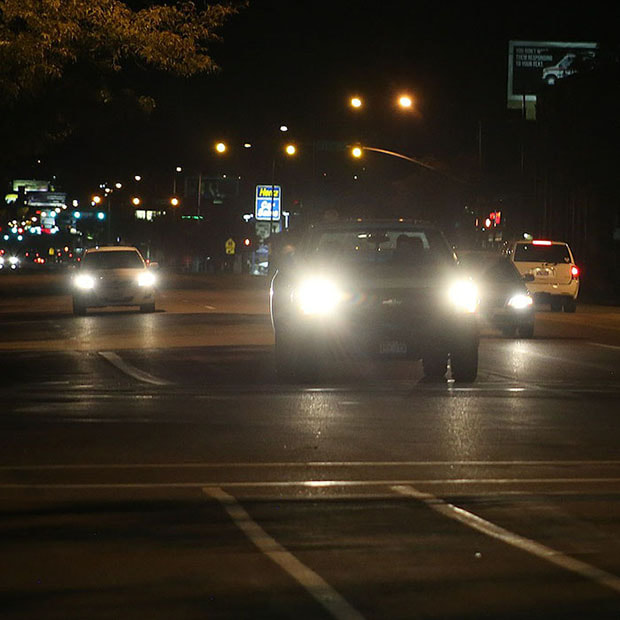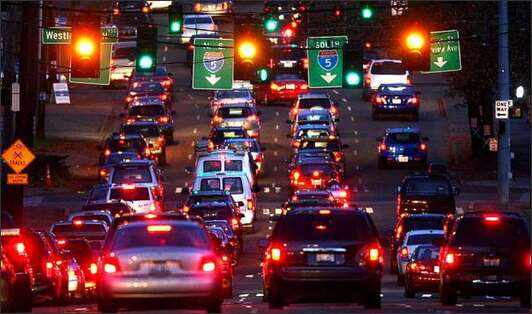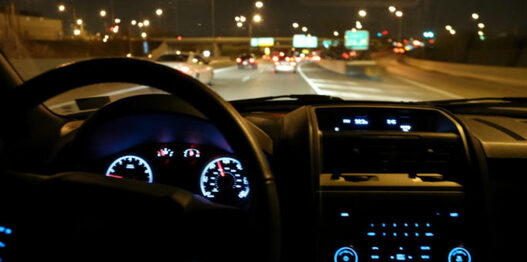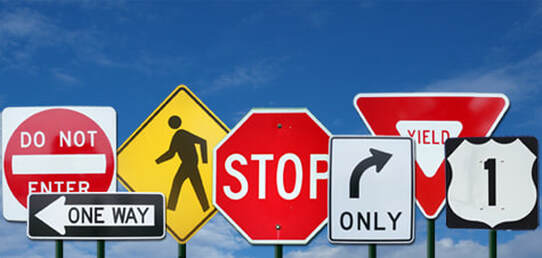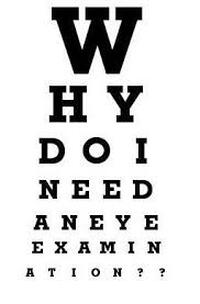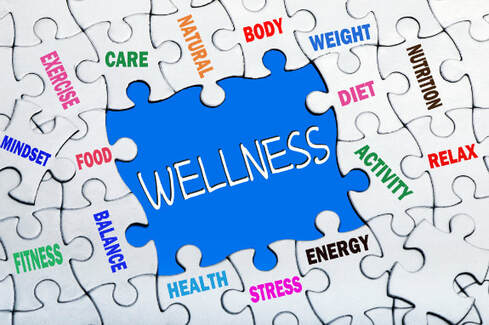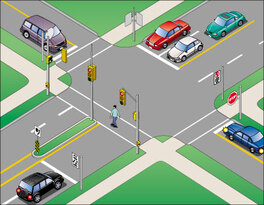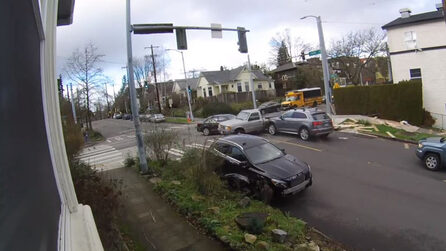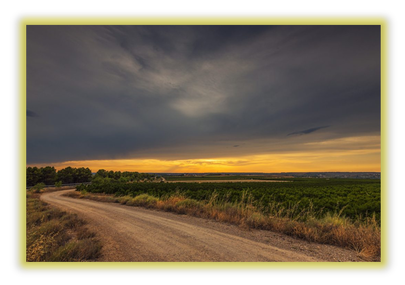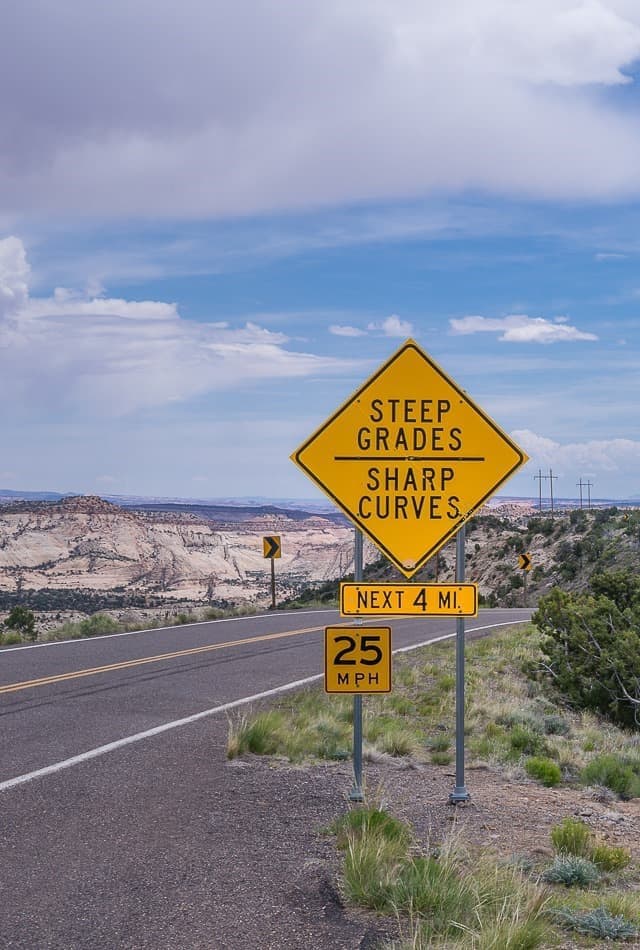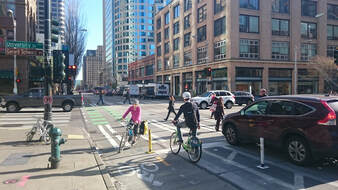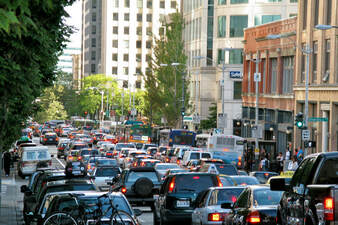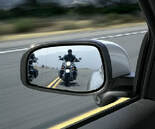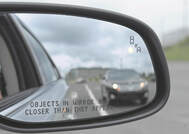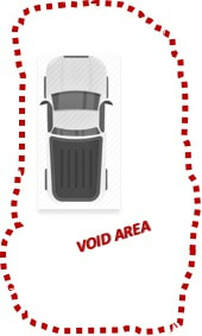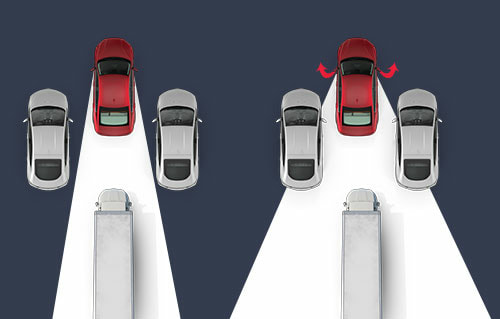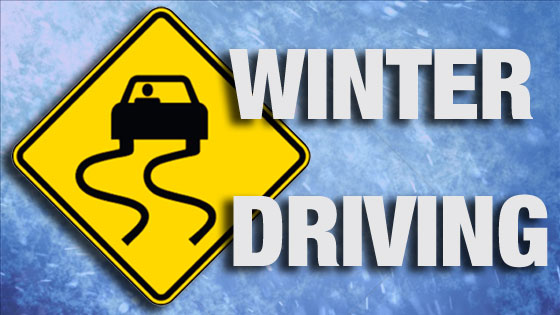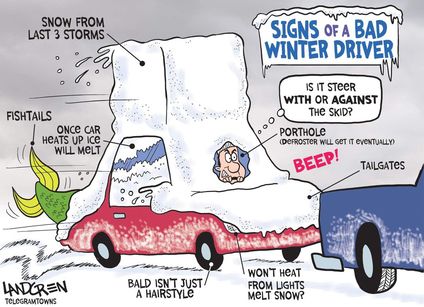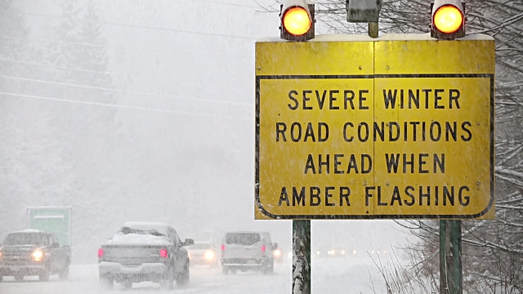|
We use our cars every day, constantly hopping in and out, parking here and there, and only noticing those annoying scratches and dents when it’s too late. Although sometimes we can’t avoid hazards such as birds “pooping” on our vehicles, we can park them in safe locations if we use some planning and preparation and we look at the location before we park there. Safety from hazards when parking belongs to the driver who parks the vehicle. SOME LOCATIONS NOT TO PARK
Blog Post Provided by our Partner Capellas Collision Reconstruction "CCR"
5 Comments
This year we have Halloween, a Global Pandemic, Elections and Daylight Savings all nicely wrapped within a few days of each other, however the end of daylight saving time in the fall is a time of year that many people look forward to, but this one-hour change may have some negative effects when it comes to road safety. Driving in the Dark May Be a Factor During the spring and summer months, people generally get up and return home while the roads and highways are brighter and hazards are easier to see. When drivers, cyclists, and pedestrians have spent the past eight months commuting in a well-lit setting, it may be hard to adjust and compensate for less light and poor weather conditions. Safe Driving Tips for Daylight Savings:
As we fall back and head towards winter, here are tips to reduce traffic incidents and collisions after the clocks change:
Fatigue, compromised night vision, rush hour, and impaired drivers are some of the risks we face when driving at night. Depth perception, color recognition and peripheral vision can also be compromised in the dark, and the glare of headlights from an oncoming vehicle can temporarily blind a driver. Plan proactively if you have to drive at night and understand the risks. Night Driving Tips  AIM YOUR HEADLIGHTS: It's worth the effort to aim them correctly. If you do it yourself, use the instructions in your owner's manual. Be patient. It may take a few tries before you have them pointed perfectly. Just make sure those newly aimed lights are not blinding oncoming traffic. DON’T STARE AT ONCOMING LIGHTS: Turn your gaze away from other lights on the road, and don't look at oncoming high beams. Lower your gaze, but focus on the road ahead of your vehicle. If bright lights shine from the vehicle behind you, adjust your mirrors to reduce the glare from the lights. DIM YOUR INSTRUMENT PANEL & DASH LIGHTS: Dimming dash lights can remove reflections on the windshield and allow your eyes to better adjust to the darkness ahead, improving nighttime visibility. KEEP YOUR WINDSHIELD & WINDOWS CLEAN, INSIDE & OUT: Clean the insides and outsides of your windows regularly using water and a clean cloth. Carry an additional cloth or towel in the vehicle for emergencies. WEAR THE CORRECT EYEWEAR: If you have corrected vision, make sure you wear your contacts or glasses when required. Glasses should have anti-reflective coatings. This coating stops additional, unnecessary light from reflecting inside your lenses while allowing more light to pass through. KEEP YOUR EYES HEALTHY: To reduce the effects of eye fatigue at night while driving, eye doctors often recommend keeping your eyes moving, scanning all around your field of vision instead of focusing on one area. The American Optometric Association suggests checkups every three years if you're under 40, every two years until you're 60, and annually after that. 2019 is in our rear view mirror and we can no longer keep looking back if we are needing to drive forward. With a New Year and the start of a new decade, we need to be pro-active in keeping to a Safe Driving Culture! Here are some New Year Resolutions we hope you will add to your personal and professional list for the coming year. Rules of the roadDriving is an integral part of our lives, and when we passed the driver’s license test the first time, we achieved an important goal. Once drivers get their licenses, they generally aren’t required to re-take the test again except in limited circumstances (usually not good ones). We understand the “rules of the road” as they apply to us and other drivers, but do we really know the rules as well as we think? Could you successfully pass the license test again? using our vision effectively Gathering information with your eyes is called “visual perception”. Safe driving depends on your ability to notice many things at once while processing those things that can affect what your next action will be. To get the correct information to the brain, a driver’s eyes have to move constantly while focusing on the most important things. The best drivers use “disciplined attention” when driving to recognize, focus, and decide what actions to take and where to go with their vehicles. This takes practice, effort, and good application. You can only be successful if you take care of your eyes! driven to wellness As driver(s) we must understand the importance of sleep and help create conditions conducive to being well-rested. The average adult requires 7-9 hours of daily sleep. As a responsible driver and valued employee, we need to consider the importance of driver health, including medical conditions and medication side effects that may cause drowsiness. Be a self manager of your time and include proper exercise, healthy eating and activities that allow your mind to reset. One of the issues we have identified through our training is that most drivers do not give themselves permission to "Take a Break"!
A meeting of the minds You are more likely to be involved in a collision while approaching or traveling through an intersection than almost anywhere else you drive. This is because there are multiple factors associated with intersections. Traffic signals, timing of approach to the intersection, vehicles crossing, variable speeds, the possibility of pedestrians, and drivers who aren’t paying enough attention are all reasons that can lead to an unfortunate “meeting of the minds”. quick tips for intersection safety
When you drive proactively, you're aware and ready for whatever happens. You’re cautious, yet ready to take action and not put your fate in the hands of other drivers. As a proactive driver, you can avoid crashes and help lower your risk behind the wheel. Home Safe All The Time.
Secondary roads in remote and/or rural areas may present hazards that drivers accustomed to travel on urban and suburban roadways may not be aware of. Extra caution is required when driving on “country roads” because they are often not designed for efficient high-speed travel like urban roadways. Whether you are driving on a rural road out of necessity or to experience scenic vistas, you should take special precautions. CHARACTERISTICS OF RURAL, COUNTRY, OR FOREST ROADS
DRIVING RURAL ROADS NAVIGATION You can easily become lost and possibly end up on difficult or dangerous roads when traveling in rural areas.
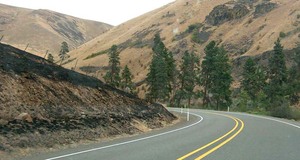 BLIND CURVES & DIPS Rural roads can have sharp curves and can follow the topography of the landscape, resulting in hills and valleys.
Always prepare for any road trips. Carry food and water and have some basic tools, and you should be able to enjoy every road trip taken.
City driving involves a variety of complex driving situations. Space, time, distances, a wide variety of vehicles, pedestrians, bicyclists, one-way, two-way streets, different schemes for lane travel, and traffic control all contribute to the challenge of driving in an urban environment. As a driver your attention to detail, focus, and the ability to adapt to changes are the key to remaining safe in an urban environment. challenges ASSOCIATED WITH URBAN DRIVING
COVERING THE BRAKE 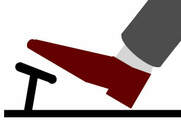 Cover braking provides a smooth transition from acceleration to braking and is effective for slowing in reduced stopping distances.
HEAVY TRAFFIC When traffic is heavy, it makes it difficult to maintain a safe space cushion around your vehicle.
Speeding is a deliberate and calculated behavior where the driver knows the risk but ignores the danger. Speeding has been a factor in nearly 1/3 of U.S. crash deaths every year. Speeding isn’t just going faster than the posted limit. Anytime you drive too fast for the road and/or weather conditions, you’re speeding. Speeding itself is dangerous, and, when combined with other poor driver behaviors, is exponentially more so. 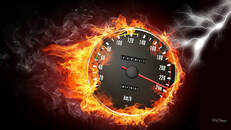 1. Under the best conditions, the average time it takes most drivers to react to a risky situation on the road is 1.5 seconds. A driver who is fatigued, distracted, or impaired by drugs or alcohol may take as long as 3 or more critical seconds to react. 2. As your speed increases, so does the distance you travel while your brain is processing and reacting to information it’s receiving, and this means the distance you need to stop is also increasing. 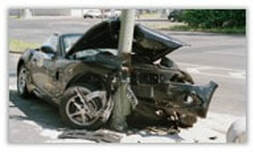 3. Speeding increases your risk of losing vehicle control. At higher speeds, motor vehicles become more difficult to maneuver—especially on corners or curves or where evasive action is necessary. 4. There is a direct correlation between speed and the severity of a crash. The higher the speed, the greater the energy that must be absorbed by the impact in a crash. 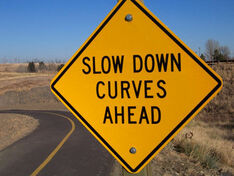 5. The effectiveness of safety devices like air bags and seat belts as well as features such as crumple zones and side member beams decline as impact speed increases. 6. Drivers are twice as likely to kill a pedestrian on impact if they are traveling at 30 mph (50 km/h) than if they are traveling at 25 mph (40 km/h). 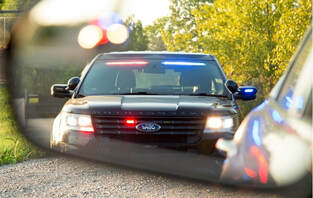 7. In urban areas, exceeding the speed limit by as little as 3 mph (5 km/h) doubles the likelihood of an injury crash and each additional increase in speed by 3 mph (5 km/h) further doubles the risk. 8. Speeding can be very expensive. In addition to speeding ticket fines, the prospect of higher insurance premiums can turn into a lasting financial burden. Depending on severity and driving history, some may face a license suspension, criminal record, or even the loss of their job. “Speed is a KNOWN QUANTITY, because it’s always in front of you.” The more aware you are of your driving, the less likely you’ll be involved in a situation requiring superior skill to avoid a collision. Safe driving, today and every day. Every vehicle has mirrors placed in prominent positions to allow drivers to see areas around and behind their vehicles. When positioned properly, mirrors can help to provide almost a complete 360-degree view of the areas around any vehicle, with the exception of directly behind the rear bumper. Additional technology such as rear-facing cameras complete the picture and supplement the mirrors. When using your mirrors, remember that they provide a portion of the total picture. Void Areas The requirements of mirrors are necessary to ensure that drivers have the capability of seeing the areas to the rear corners and next to their vehicles. The areas are often “invisible” if just looking out the windows, but when using mirrors those areas become visible and allow drivers to see more completely around their vehicles. The “invisible” areas around the car are commonly referred to as the VOID AREAS. Proper Mirror adjustments INTERIOR MIRROR: If your vehicle is equipped with an interior center mirror, it should be adjusted to “frame” the rear window of the vehicle. This allows for a “pillar-to-pillar” rear view of the area behind the vehicle. RIGHT & LEFT EXTERIOR MIRRORS: Both the right and left exterior mirrors should be adjusted to allow the most complete view of those areas to the rear corners and sides of the vehicle. The “best practice” method of adjusting the mirrors is as follows:
REAR VEHICLE MIRROR: If your vehicle is equipped with a mirror at the rear (trucks, box vans, buses), adjust the mirror so you can see the rear bumper of the vehicle from the driver’s seat. REAR-VIEW CAMERA: If equipped, use the camera view to SUPPLEMENT the overall picture – DON’T RELY ONLY ON THE CAMERA FOR THE REAR VIEW. You won’t get the full picture behind or around your vehicle if you only use the camera. Always turn your head and use the mirrors to complete the picture. Preparation can help make any trip safer and will help you deal with emergencies when they occur. Weather is a causal factor in many crashes, especially in the winter, but drivers can learn to be more prepared in less-than-favorable conditions. RECOMMENDATIONS FOR WINTER DRIVING Even if you’ve heard it before, it’s always good to be reminded of safe driving practices for winter conditions of any kind.
Watch weather reports before driving anywhere, and plan your route to optimize the roads traveled on.
|
Please contact us for fleet Driver training today
AddressPO Box 25818
Federal Way, WA 98093 |
phone
425.749.8554
|
|
For More Information |

